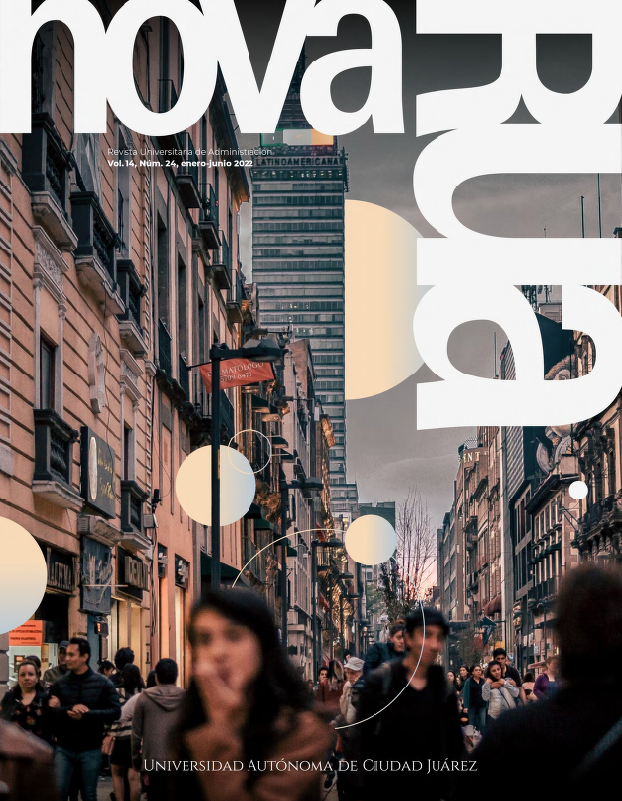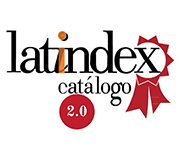El tiempo estándar y su importancia en las cotizaciones de proyectos de manufactura. Un enfoque de gestión
DOI:
https://doi.org/10.20983/novarua.2022.24.6Palabras clave:
Estudio de tiempos, Sistemas de manufactura, Sector manufacturero de arnesesResumen
La cotización de la mano de obra en proyectos de manufactura es un factor decisivo para la competitividad de organizaciones de este sector. Es prioritaria en organizaciones de mano de obra intensiva por la frecuente aparición de nuevos competidores. El objetivo de este trabajo fue identificar, basado en tiempo estándar de operación, cómo difieren las cotizaciones de mano de obra nominales en relación con las reales en proyectos de nuevos negocios, para identificar alternativas de gestión y reducir estas brechas. Se eligió un conjunto de operaciones relevantes de costo de mano de obra, examinando el costo cotizado en relación con el real; estimado mediante un estudio de tiempos. Los resultados mostraron que las estimaciones basadas en datos históricos difieren significativamente en relación con los datos que proporcionaron los estudios de tiempo, estableciendo avenidas de gestión. Se presentan las conclusiones derivadas del estudio, así como las recomendaciones para trabajos futuros.
Citas
Arias, L., Portilla, L. y Fernández, S. (2010). La distribución de costos indirectos de fabricación, factor clave al costear productos. Scientia Et Technica, XVI(45), 79-84. Recuperado de: http://www.redalyc.org/articulo.oa?id=84917249014.
Casero, P. M. (2019). Estudio de métodos y tiempos en Lingotes Especiales S.A. (Tesis de pregrado). Universidad de Valladolid. Recuperado de: https://uvadoc.uva.es/handle/10324/40126.
de la Riva, J., González, M., Esquivel, R. y Alamillo, A. (2011). Desarrollo De Un Sistema De Capacitación Para La De Toma De Tiempos Estándar Mediante Cronómetro. Academia Journals, 3(1), 111-116. Recuperado de: https://drive.google.com/folderview?id=0B4GS5FQQLif9flRwUnZjOXV3SGtfdHB6RjNSTzFQSUR0ank3d2lMYU1MX19ja1VOdGFxd1k&usp=sharing.
Fiallos, R. D. (2015). Proceso De Ensamblaje De Aviones No Tripulados Para El Centro De Investigación y Desarrollo De La Fuerza Aérea Ecuatoriana (CIDFAE) (Tesis de Pregrado). Universidad Técnica de Ambato. Recuperado de: https://repositorio.uta.edu.ec/jspui/handle/123456789/19383.
Ganorkar, A. B., Lakhe, R. R. y Agrawal, K. N. (2019). Methodology for application of Maynard Operation Sequence Technique (MOST) for time-driven activity-based costing (TDABC). International Journal of Productivity and Performance Management, 68(1), 2-25. DOI: https://doi.org/10.1108/IJPPM-06-2017-0156.
Gozali, L., Daywin, F. J. y Jestinus, A. (2020). Calculation of labor amount with theory of constraints and line balancing method in Pt. XYZ Fish Crackers factory. IOP Conference Series: Materials Science and Engineering, 852(1), 1-8. DOI: https://doi.org/10.1088/1757-899X/852/1/012092.
Jayashree, S., Reza, M. N., Malarvizhi, C. A., Gunasekaran, A. y Rauf, M. A. (2022). Testing an adoption model for Industry 4.0 and sustainability: A Malaysian scenario. Sustainable Production and Consumption, 31, 313-330. DOI: https://doi.org/10.1016/j.spc.2022.02.015.
Linares, V. (2018). Diagnosis de averías y mantenimiento correctivo de sistemas de automatización industrial. IC Editorial.
Meyers, F. E. (2000). Estudio de tiempos y movimientos para la manufactura agil. Pearson Education.
Michalos, G., Fysikopoulos, A., Makris, S., Mourtzis, D. y Chryssolouris, G. (2015). Multi criteria assembly line design and configuration - An automotive case study. CIRP Journal of Manufacturing Science and Technology, 9, 69-87. DOI: https://doi.org/10.1016/j.cirpj.2015.01.002.
Miño, G., Moyano, J. y Santillán, C. (2019). Tiempos estándar para balanceo de línea en área soldadura del automóvil modelo cuatro. Ingeniería Industrial, 40(2), 110-122. Recuperado de: http://scielo.sld.cu/scielo.php?script=sci_arttext&pid=S1815-59362019000200110.
MTM (2022). MTM (Methods-Time Measurement). Recuperado de: https://mtm.org/en/about-mtm/mtm.
Niebel, B. W. y Freivalds, A. (2014). Ingeniería industrial : métodos, estándares y diseño del trabajo. Andris Freivald.
Puvanasvaran, A. P., Yap, Y. Y. y Yoong, S. S. (2019). Implementation of Maynard operation sequence technique in dry pack operation-a case study. ARPN Journal of Engineering and Applied Sciences, 14(21), 3732-3737. Recuperado de: http://www.arpnjournals.com/jeas/volume_21_2019.htm.
Roncancio, M., Reina, D., Hualpa, A., Felizzola, H. y Arango, C. (2017). Using learning curves and confidence intervals in a time study for the calculation of standard times. Inge Cuc, 13(2), 18-27. DOI: https://doi.org/10.17981/ingecuc.13.2.2017.02.
Rosa, E. S., Godina, R., Rodrigues, E. M. y Matias, J. C. (2022). An Industry 4.0 Conceptual Model Proposal for Cable Harness Testing Equipment Industry. Procedia Computer Science, 200, 1392-1401. DOI: https://doi.org/10.1016/j.procs.2022.01.340.
Sadeghitabar, F., Khan, S. A. y Eiliat, H. (2019). Cycle Time Reduction in the Plastic Fuel Tanks Production Line: A Lean Manufacturing Case Study at Kautex Corporation. International Conference on Industrial Engineering and Operations Management, 1518-1528.
Socconini, L. y Martín, J. P. (2019). Lean Energy 4.0. Guía de implementación. Alfaomega Marge Books.
Zandin, K. B. (2002). MOST Work Measurement Systems. Taylor & Francis. DOI: https://doi.org/10.1201/9781482275940.
Publicado
Número
Sección
Licencia
Derechos de autor 2022 Lorena Janeth Méndez Meléndez, Diego Adiel Sandoval Chávez, Luz Elena Terrazas Mata

Esta obra está bajo una licencia internacional Creative Commons Atribución-NoComercial-CompartirIgual 4.0.
Todos los contenidos de la edición electrónica de la revista se distribuyen bajo una licencia de uso y distribución “Creative Commons Reconocimiento-No Comercial-Compartir Igual 4.0 Internacional” (CC-BY-NC-SA). Puede consultar desde aquí la versión informativa de la licencia.
Aquellos autores/as que tengan publicaciones con esta revista, aceptan los términos siguientes: a) Los autores/as conservarán sus derechos de autor y garantizarán a la revista el derecho de primera publicación de su obra; b) Se permite y recomienda a los autores/as difundir su obra a través de Internet (p. ej.: en archivos telemáticos institucionales o en su página web), lo cual puede producir intercambios interesantes y aumentar las citas de la obra publicada. (Véase El efecto del acceso abierto).












